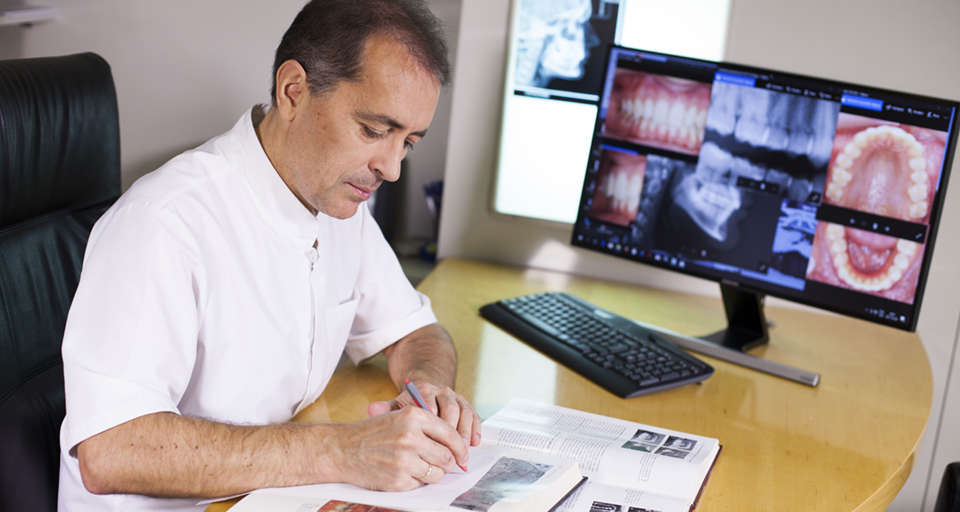Three-dimensional imaging methods for quantitative analysis of facial soft tissues and skeletal morphology in patients with orofacial clefts: a systematic review.
Written by admin on April 30, 2014
PLoS One. 2014 Apr 7;9(4):e93442. doi: 10.1371/journal.pone.0093442. eCollection 2014.
Kuijpers MA(1), Chiu YT(2), Nada RM(3), Carels CE(1), Fudalej PS(4).
Author information:
(1)Department of Orthodontics and Craniofacial Biology, Radboud University
Medical Centre, Nijmegen, the Netherlands; Cleft Palate Craniofacial Unit,
Radboud University Medical Centre, Nijmegen, The Netherlands.
(2)Department of Dentistry and Craniofacial Center, Chang Gung Memorial
Hospital, Taipei, Taiwan.
(3)Department of Orthodontics and Craniofacial Biology, Radboud University
Medical Centre, Nijmegen, the Netherlands.
(4)Department of Orthodontics and Craniofacial Biology, Radboud University
Medical Centre, Nijmegen, the Netherlands; Department of Orthodontics and
Dentofacial Orthopedics, University of Bern, Bern Switzerland; Department of
Orthodontics, Palacky University Olomouc, Olomouc, Czech Republic.
BACKGROUND: Current guidelines for evaluating cleft palate treatments are mostly
based on two-dimensional (2D) evaluation, but three-dimensional (3D) imaging
methods to assess treatment outcome are steadily rising.
OBJECTIVE: To identify 3D imaging methods for quantitative assessment of soft
tissue and skeletal morphology in patients with cleft lip and palate.
DATA SOURCES: Literature was searched using PubMed (1948-2012), EMBASE
(1980-2012), Scopus (2004-2012), Web of Science (1945-2012), and the Cochrane
Library. The last search was performed September 30, 2012. Reference lists were
hand searched for potentially eligible studies. There was no language restriction.
STUDY SELECTION: We included publications using 3D imaging techniques to assess
facial soft tissue or skeletal morphology in patients older than 5 years with a
cleft lip with/or without cleft palate. We reviewed studies involving the facial
region when at least 10 subjects in the sample size had at least one cleft type.
Only primary publications were included.
DATA EXTRACTION: Independent extraction of data and quality assessments were
performed by two observers.
RESULTS: Five hundred full text publications were retrieved, 144 met the
inclusion criteria, with 63 high quality studies. There were differences in
study designs, topics studied, patient characteristics, and success
measurements; therefore, only a systematic review could be conducted. Main
3D-techniques that are used in cleft lip and palate patients are CT, CBCT, MRI,
stereophotogrammetry, and laser surface scanning. These techniques are mainly
used for soft tissue analysis, evaluation of bone grafting, and changes in the
craniofacial skeleton. Digital dental casts are used to evaluate treatment and
changes over time.
CONCLUSION: Available evidence implies that 3D imaging methods can be used for
documentation of CLP patients. No data are available yet showing that 3D methods
are more informative than conventional 2D methods. Further research is warranted
to elucidate it.
DOI: 10.1371/journal.pone.0093442
PMCID: PMC3977868
PMID: 24710215 [Indexed for MEDLINE]
Conflict of interest statement: Competing Interests: The authors have declared
that no competing interests exist.




